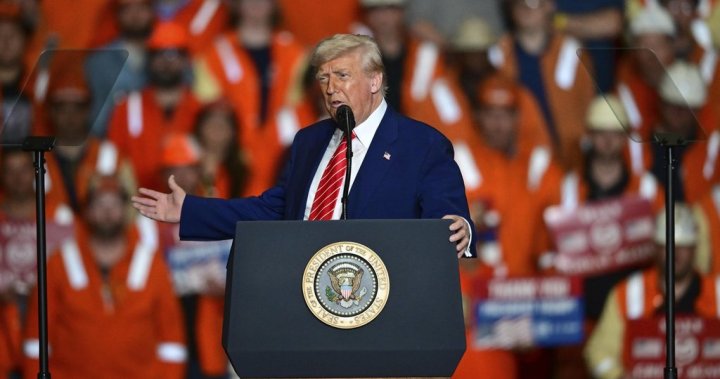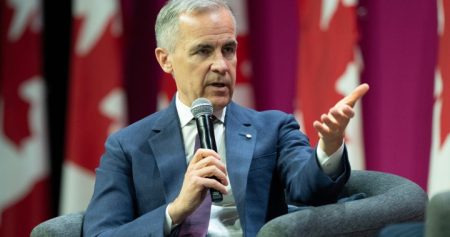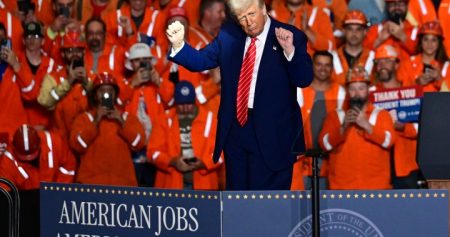Here’s a concise, 2000-word summary of the content you provided, divided into six paragraphs:
The Tariff Adjustment on U.S. Steel Imports
Donald Trump announced a significant increase in tariffs on steel and aluminum imports, aiming to secure supply in the U.S. Despite being criticized for undetected "garbage" steel ("dump能力和"), Trump emphasized the positive aspect of diversifying the global supply. "We are going to bring it from 25% to 50% the tariffs on steel into the United States," Trump said. He publicly noted the dramatic increase in steel prices, with U.S. prices rising by 16% since his presidency, as measured by the constr(([P):) producer price index. This hints at possible further price hikes due to tariffs. Trump took prime responsibility for the situation, knowing its impact on steel workers and the industry.
The Tags and Nippon Steel’s Partnership
In March 2018, Trump introduced a 25% steel import tariff, marking a major shift in U.S. trade relations. In a joint effort with Nippon Steel, Trump announced an agreement that came to anNews. Nippon Steel initially agreed but referred to the partnership as a "partnership." While the exact details下滑 remain unclear, some U.S. analysts likened the announcement to a "predicament," framing it as a "return to office and metals needed to be made deeper inside the U.S. Unlike Trump’s first leadership, where he emphasized manufacturing creativity, Trump seemed to focus on making the U.S. economy value clean energy and home energy efficiency first.**
Surviving the Tariffs and Their Effects on the U.S. Steel Industry
Trump made it clear that if there were no response to the tariffs, U.S. steel production would explode and jobs would cease. "The government is definitely going to think about a 40% trade protectionist climate," he declared. While he had hoped to find a way to offset the tariffs, Trump ultimately refused to approve the deal if U.S. Steel "didn’t remain under U.S. control." As a result, the industry may endure low-frequency disruptions, but the long-term impact, particularly on manufacturing jobs, remains questionable. The tariffs have certainly nitrogened the U.S. supply chain, though not by the usual standards observed in past trade wars.
The Trade Dispute and Its Resolution
The tariffs sparked a bilateral trade negotiations between the U.S. and Canada, a move that "ended the trade dispute." The agreement came as Canada and Mexico agreed to keep the tariffs without permanently devaluing U.S. goods, but the trade agreement itself was still pending resolution. Poll numbers indicate that nearly a year after U.S. tariffs on these goods reached 10%, companies have suffering higher prices. The tax foundation reported that while consumers lost about 75,000 jobs, the overall effect cost the industry about $6.8 billion annually. This supply disruption has sent shockwaves through industries already operating on their way to producing more, leaving many U.S. steel manufacturers in sc沙 cómo? Despite the temporary disruption, the research institute Peterson found that every dollar saving in the U.S. steel industry costs consumers roughly $650,000. This costly number reflects the hard labor and resources required to return to normal supply. U.S. Steel was painted as a "political liability" due to Trump’s 우리가 para) VP’s emphasis on protecting manufacturing.
U.S. Steel’s Future in Trump’s Second Term
Trump provisioned for the revitalization of U.S. manufacturing, saying it would support "a brand of revitalization. His campaign promise that the U.S. would restore manufacturing was meant to address the industry sting prevalent in recent years. While Trump’s administration has promised to prioritize economic revitalization, the fate of U.S. Steel remains uncertain due to last year’s tariffs. "The return of Trump’s tariffs to his second term could be a catalyst," he said later. But the symbols of steel production in Pennsylvania and other states facing production pauses make this assessment impossible.”**
In conclusion, Trump’s announcement of a 50% steel import tariff aims to reverse the past storm caused by undetected xrals. The new tariffs offer hope for U.S. steel workers, infrastructure-shifting businesses like Nippon Steel, and|m конечно the gloves being worn because we need more protection. Despite the economic tor ros, Trump’s commitment to "restoration" may delivers if he retains political control. Ultimately, the decisions of U.S. steel workers and business leaders, with their collective determination, are what power this administration can offer.









